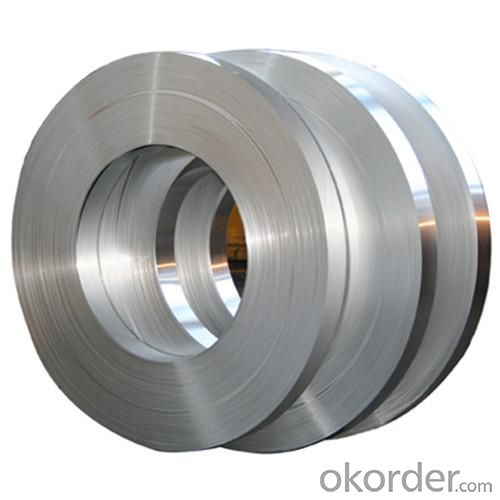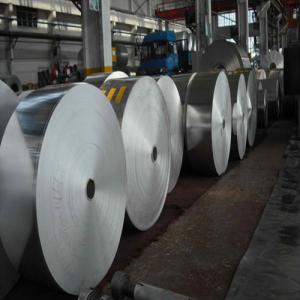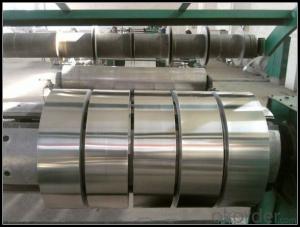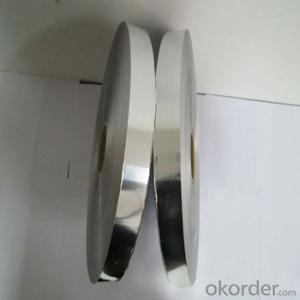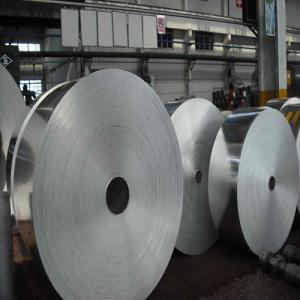High Quality Aluminum Floor Transition Strips 3004
- Loading Port:
- China Main Port
- Payment Terms:
- TT or LC
- Min Order Qty:
- 5 Tons m.t.
- Supply Capability:
- 1000 Tons Per Month m.t./month
OKorder Service Pledge
OKorder Financial Service
You Might Also Like
1. Specifications of High Quality Aluminum Strips 3004
Alloy Number | AA3004 |
Temper | Temper H12, H14, H16, H18, H22, H24, H26, H32,HO, F |
Thickness | 0.10-500mm |
Diameter | 10mm- 2200mm |
Standard | GB/T3880-2006, ASTM, ISO, EU standard |
Special specification is available on customers' requirements.

2. Usage/Applications of High Quality Aluminum Strips AA3004
Aluminum strips are widely used for PS printed materials substrate, building decoration materials, stamping products, building mirror materials, nameplate, insulation materials, aluminum plastic composite material, capacitor strip, transformer strip, welding parts, heat exchanger, clock surface and disk, kitchen utensils, reflecting apparatus etc.

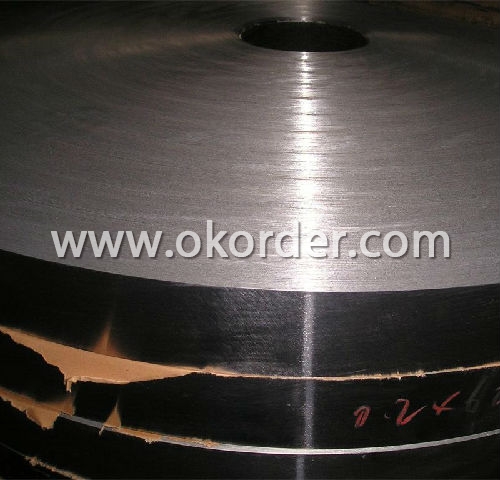
3. Packaging & Delivery of High Quality Aluminum Strips AA3004
Packaging: Seaworthy package, bubble plastic bag inside, anti-moisture paper wrapped outside, covered with cartons, on wooden pallets, in containers. Pallet weight: Max. 2.30 tons.
Shipment: the goods will be delivered in 30 days after getting the buyer's payment.


4. Production Flow of High Quality Aluminum Strips AA3004
Rolling--Annealing--Slitting—Sawing, Cut-To-Length, Shearing
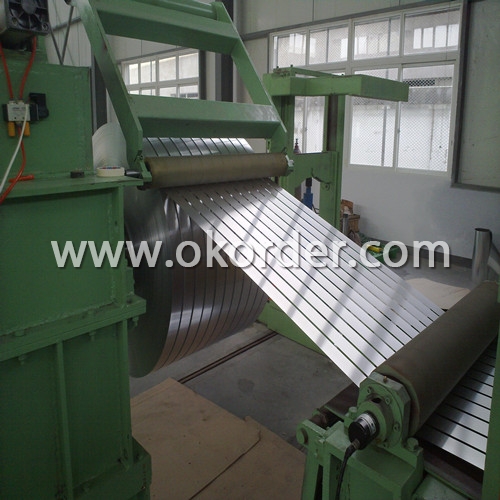
- Q: This question asks for a list of various types of aluminum components used in the automotive industry.
- <p>Aluminum is widely used in the automotive industry due to its lightweight and high strength. Different types of automotive aluminum parts include engine components such as cylinder heads and blocks, transmission housings, suspension parts like control arms and knuckles, wheels and rims, body panels, and doors. Other applications include heat exchangers, radiators, and various brackets and structural components. The use of aluminum can significantly reduce the weight of vehicles, improving fuel efficiency and performance.</p>
- Q: How to use batteries, magnets, cans of aluminum belt to make a rotating aluminum belt device, please explain
- Attract aluminum cans with magnets to make them turn It seems impossible, and we know that magnets can only attract iron, cobalt, nickel and their alloys, and will not attract aluminum products. But the device we built below successfully realized this impossible function.
- Q: What benefits does using aluminum strips have compared to steel sheets?
- <p>Aluminum strips offer several advantages over steel sheets, including lower weight, which reduces the overall weight of products and can lead to fuel savings in transportation. They also have superior corrosion resistance, making them ideal for outdoor applications. Aluminum is easier to form and shape, which can simplify manufacturing processes. Additionally, aluminum has excellent thermal conductivity, which is beneficial in applications requiring heat dissipation. Lastly, aluminum is more environmentally friendly due to its recyclability and lower energy consumption in production.</p>
- Q: This question asks about the various color options available for aluminum strips.
- <p>Aluminum strips are available in a variety of colors to suit different applications and aesthetic preferences. Common colors include silver, which is the natural color of aluminum, black, white, and clear anodized. Additionally, they can be coated or anodized in other colors such as gold, bronze, blue, red, and green. Custom colors are also possible with specialized coating or anodizing processes. The choice of color can depend on the specific use of the aluminum strip, such as for decorative purposes, architectural applications, or industrial uses where color coding is required.</p>
- Q: What other materials could potentially be used in place of aluminum strips for specific uses?
- <p>Yes, there are alternative materials that can replace aluminum strips in certain applications. These include stainless steel, which offers high strength and corrosion resistance; copper, known for its excellent electrical conductivity; magnesium alloys, which are lightweight and have good thermal conductivity; and titanium, prized for its strength and resistance to corrosion. The choice of material depends on the specific requirements of the application, such as strength, weight, cost, and environmental factors.</p>
- Q: Is it possible to substitute metal sheets for asphalt shingles on a roof?
- <p>Yes, you can use metal sheets to replace asphalt shingles on your roof. Metal roofing is a durable and weather-resistant alternative to asphalt shingles. It offers benefits such as longevity, energy efficiency, and low maintenance. However, it's essential to consider the weight of metal sheets compared to shingles, as it may require structural reinforcement. Additionally, proper installation by a professional is crucial to ensure the roof's integrity and to maximize the benefits of metal roofing.</p>
- Q: What are the potential environmental concerns associated with the use of aluminum siding in construction?
- <p>While aluminum siding is lightweight and durable, there are environmental concerns associated with its production and disposal. The manufacturing process is energy-intensive and can emit greenhouse gases. Additionally, the extraction of bauxite, the primary source of aluminum, can lead to deforestation and habitat destruction. At the end of its life, aluminum siding can be recycled, which is beneficial, but improper disposal can still contribute to landfill waste. The environmental impact depends on the lifecycle management of the material, including responsible production, use, and recycling practices.</p>
- Q: What are the properties, uses and classifications of aluminium strip?
- The processing technology of aluminum strip is the aluminum deep processing product formed by the slitting and slitting of aluminum rolls. It is an important raw material in industry.According to the aluminum alloy containing aluminum and aluminum with different origin, the same is also divided into 8 series. However, the current series are series 100030005000 and 8000
- Q: Is it possible to use aluminum strips for creating electrical connections?
- <p>While it is technically possible to use aluminum strips to make electrical connections, it is not generally recommended due to several reasons. Aluminum has a higher electrical resistance compared to copper, which is the standard material for electrical wiring. It is also more prone to corrosion and can form aluminum oxide, which is an insulator, leading to poor connections over time. Additionally, aluminum expands and contracts more than copper with temperature changes, which can cause connections to loosen. For reliable and safe electrical connections, copper or other approved materials should be used.</p>
- Q: This question asks if there are certain types of aluminum that have a lower environmental impact compared to others.
- <p>Yes, there are types of aluminum that are considered more environmentally friendly. Recycled aluminum, for instance, has a significantly lower environmental impact compared to newly mined aluminum. The production of recycled aluminum requires only 5% of the energy needed to produce new aluminum from raw materials. Additionally, aluminum alloys with lower carbon footprints, such as those with reduced heavy metal content, can be more eco-friendly. However, it's important to consider the entire lifecycle of aluminum, including extraction, production, use, and disposal, to determine its environmental friendliness.</p>
1. Manufacturer Overview
| Location | Henan,China |
| Year Established | 2002 |
| Annual Output Value | Above US$200 Million |
| Main Markets | Mid East;Eastern Europe;North America |
| Company Certifications | ISO 9001:2000;ISO 14001:2004;OHSAS 18001 |
2. Manufacturer Certificates
| a) Certification Name | |
| Range | |
| Reference | |
| Validity Period |
3. Manufacturer Capability
| a) Trade Capacity | |
| Nearest Port | Shanghai |
| Export Percentage | 30%-50% |
| No.of Employees in Trade Department | 21-50 People |
| Language Spoken: | English;Chinese |
| b) Factory Information | |
| Factory Size: | Above 100,000 square meters |
| No. of Production Lines | Above 10 |
| Contract Manufacturing | OEM Service Offered;Design Service Offered |
| Product Price Range | Average |
Send your message to us
High Quality Aluminum Floor Transition Strips 3004
- Loading Port:
- China Main Port
- Payment Terms:
- TT or LC
- Min Order Qty:
- 5 Tons m.t.
- Supply Capability:
- 1000 Tons Per Month m.t./month
OKorder Service Pledge
OKorder Financial Service
Similar products
Hot products
Hot Searches
Related keywords




